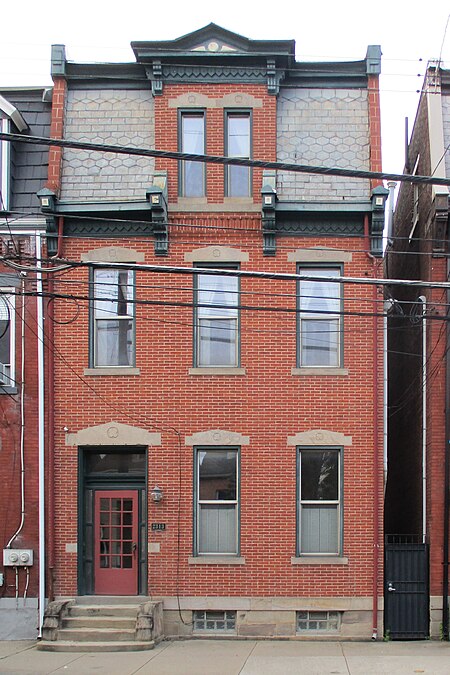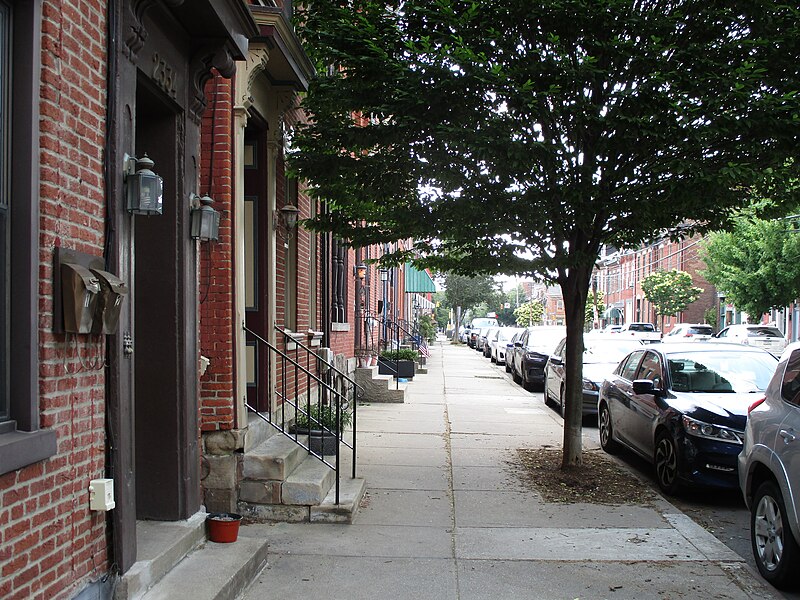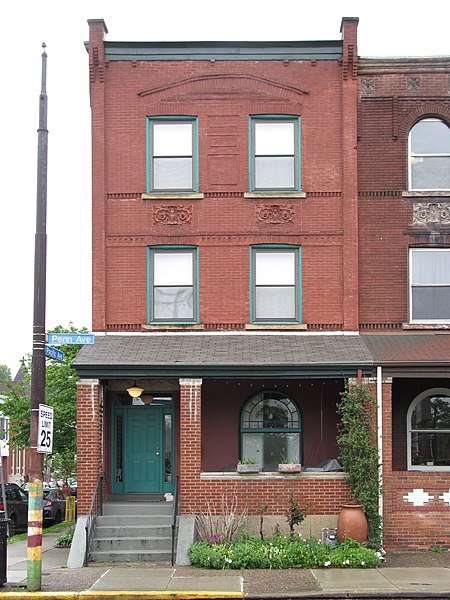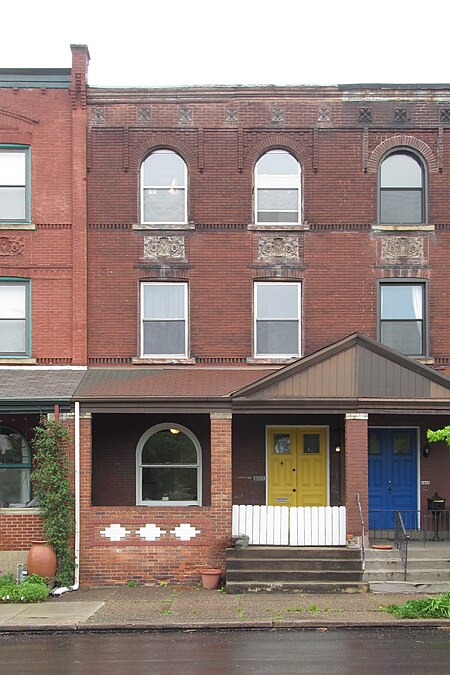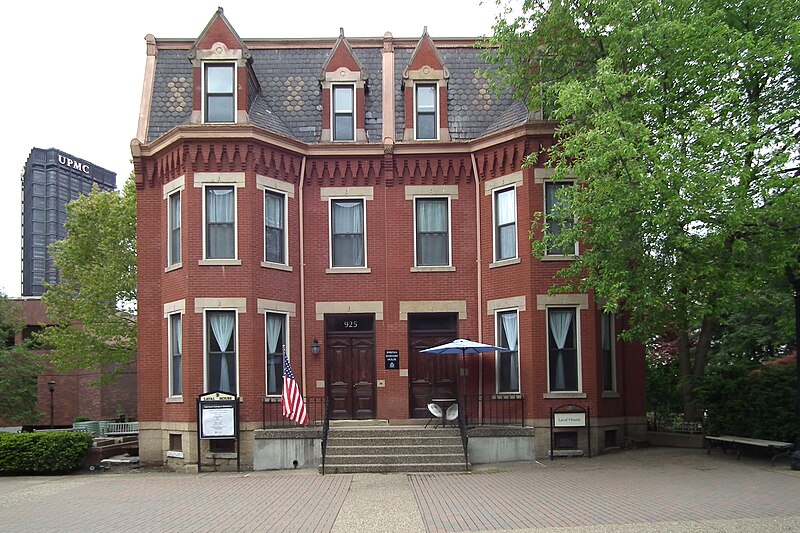
The big blue “CONDEMNATION” sticker appeared on a fine Italianate rowhouse in the 1100 block of Sarah Street a while ago, and old Pa Pitt decided to document the house before it vanished. You can imagine how delighted he was to find that the blue sticker is gone and the house is under renovation, with new windows installed already.

Nothing can stop a contractor from installing Georgian-style fake “multipane” windows, which contractors think of as the mark of quality, even when they are completely inappropriate for the style of the house, and even when the “panes” are false divisions made by laying a cartoon grid over a single sheet of glass. But at least these windows are the right size for the holes, and therefore no lasting damage has been done. Father Pitt would guess that a house like this originally had two-over-two windows: see, for comparison, this house of similar age Uptown.

The woodwork is a bit tattered, but we hope it can be preserved.

This transom is crying out for an address in stained glass. Emerald Art Glass is only a dozen blocks away.

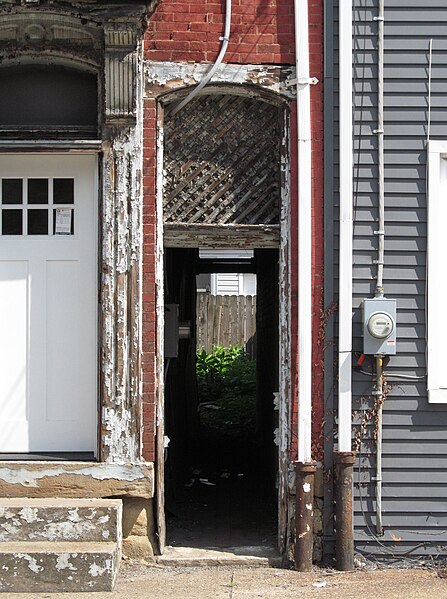
Of course Father Pitt could not leave without documenting this fine breezeway.

Like the windows, the front door is a standard model that fits properly and could be replaced with a more appropriate style later by a more ambitious owner.







